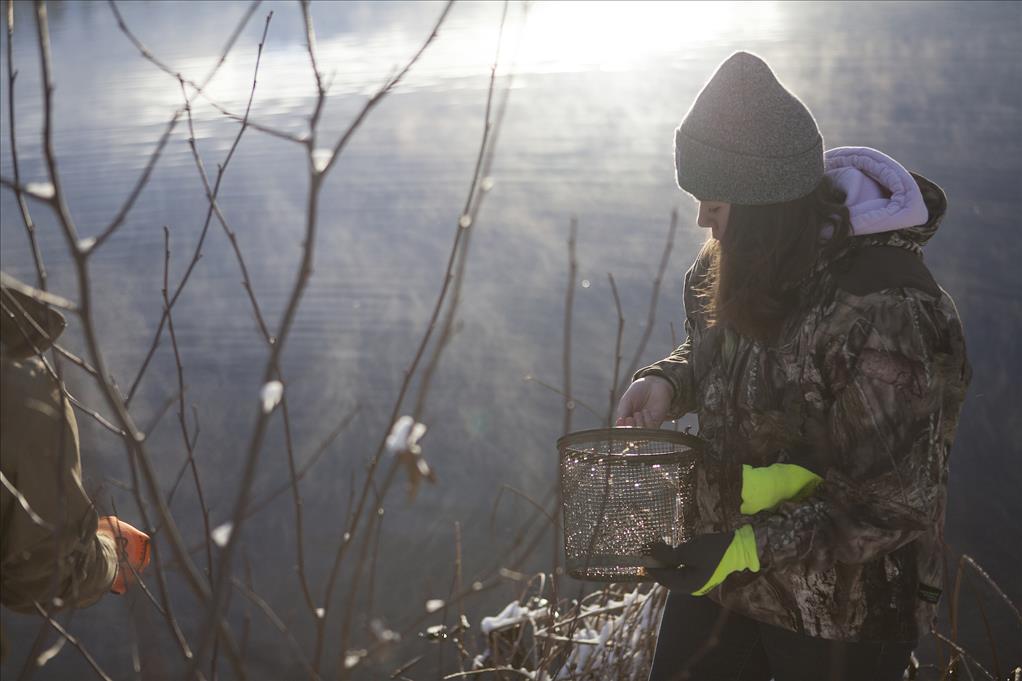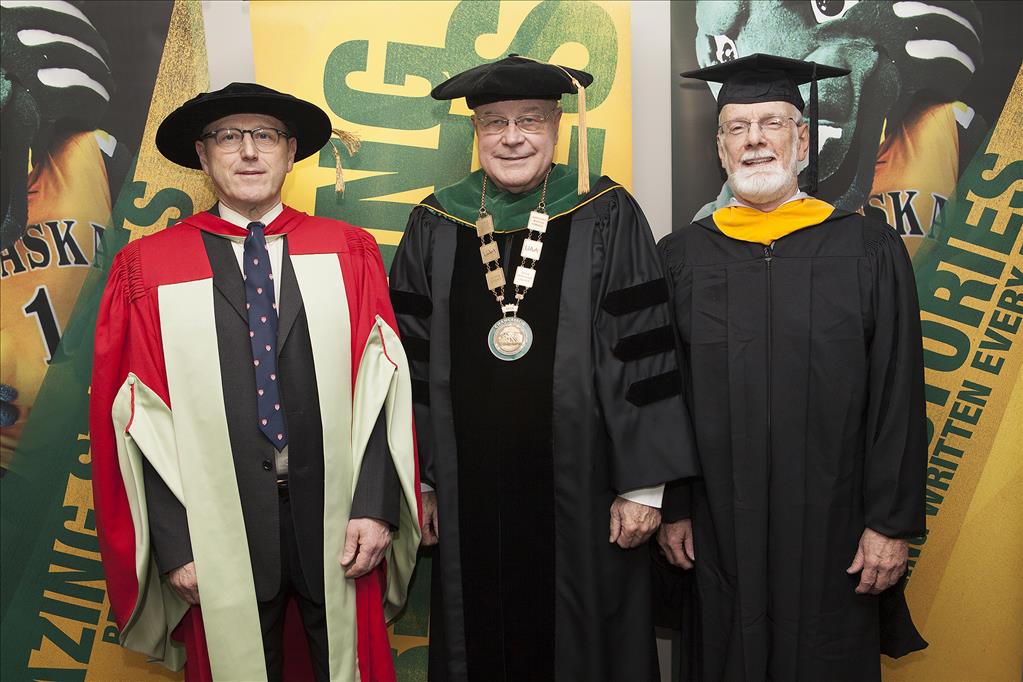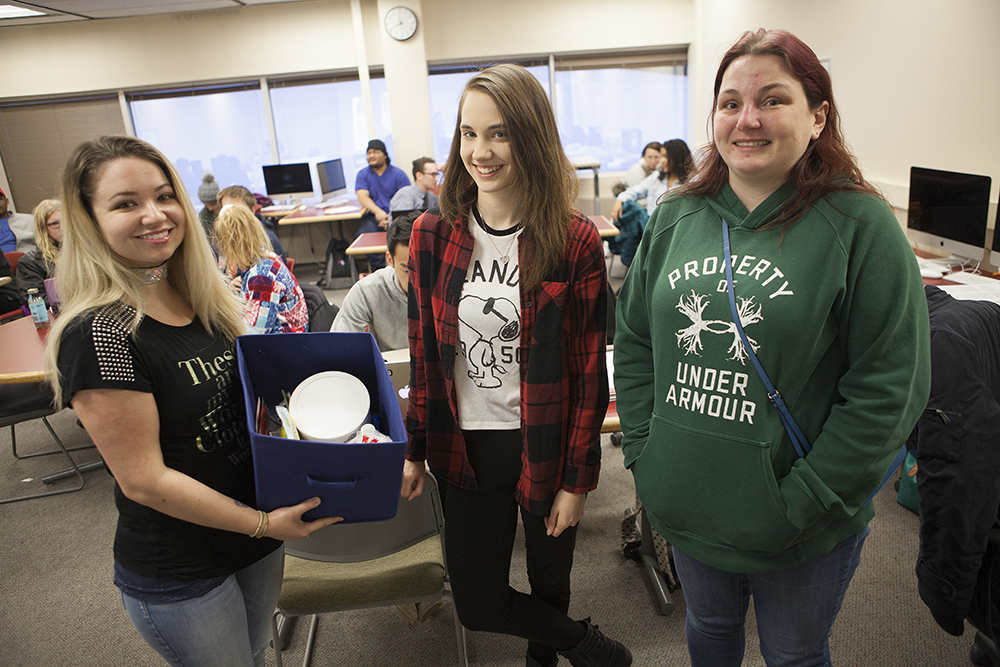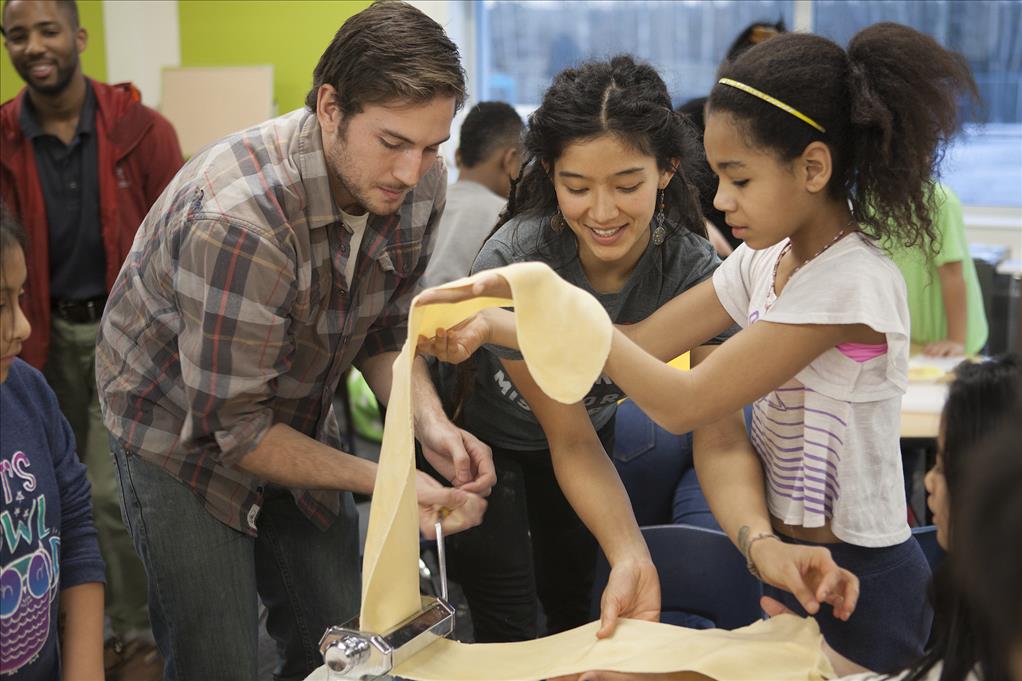Shining light into the darkness of domestic violence
by Tracy Kalytiak |
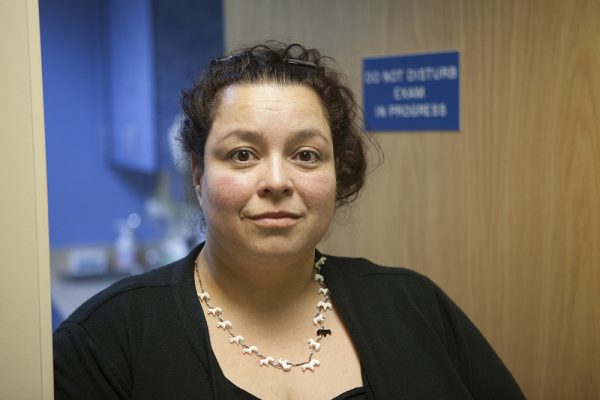 Angelia Trujillo is a professor of forensic nursing at UAA. Last year, she received
the 2014 Journal of Forensic Nursing Education Article of the Year for her article about prevention of interpersonal
violence, A Practical Guide to Prevention for Forensic Nursing
Angelia Trujillo is a professor of forensic nursing at UAA. Last year, she received
the 2014 Journal of Forensic Nursing Education Article of the Year for her article about prevention of interpersonal
violence, A Practical Guide to Prevention for Forensic Nursing, co-written with UAA's Tina DeLapp and Thomas Hendrix. (Photo by Philip Hall / University of Alaska Anchorage)
Domestic violence can be difficult to see.
Photos of a smiling man and woman at a dinner table or out with the kids contradict words in a police document describing how he kneed her in the chest and, at another time, choked her until she blacked out.
Yet this contradiction happens far too often in homes throughout Anchorage and Alaska. Also far too often, lives end-this couple and their two small children died last year in Anchorage in a murder-suicide that occurred after years of abuse.
Domestic violence was once considered private-people who heard the cries and saw the bruises usually chose to mind their own business, not get involved.
"Domestic violence was hidden, shameful," said Angelia Trujillo, a professor for the UAA School of Nursing, who teaches her students about the psychology and signs of domestic violence. "No one wanted to talk about it. But it's everyone's problem. It's not a secret thing that happens in a home. It's everywhere."
Now, faculty, staff and students at UAA are reaching out and stepping in, educating people both on and off campus about how to see and effectively respond to the warning signs of domestic violence, which afflicts an estimated one in four women and 5 percent of men. Almost 75 percent of Alaskans have experienced or know someone who has experienced domestic violence or sexual assault.
"We're mainly a commuter campus-our students live out in the community," said Betty Bang, a family nurse practitioner and health educator with the UAA Student Health and Counseling Center. "With our 'Bringing in the Bystander' program, we have a really good chance to give students coming here to further their education-international students, students from rural areas-skills they can share with their communities back home, too."
'Changing norms'
This month, October, is Domestic Violence Awareness Month. Domestic violence, according to a definition posted by the UAA Justice Center, is "a pattern of abusive behavior in any relationship used by one partner to gain or maintain power and control" over an intimate partner.
DV tactics can include physical, sexual, emotional, economic or psychological abuse intended to intimidate, terrorize, coerce or manipulate another person.
The Justice Center's André Rosay, Lindsey Blumenstein, Brad Myrstol and Khristy Parker have conducted recent research and surveys that more sharply define where and why domestic violence happens in Anchorage and other areas of the state, how it looks in rural versus urban areas, helping lawmakers, Alaska State Troopers and others in the community better understand its nuances so they can more effectively address domestic violence issues.

UAA's Dr. Lindsey Blumenstein, who researches intimate-partner violence (IPV), delivered a presentation at the 2016 Alaska Maternal Child Health & Immunization Conference on Sept. 27. She noted that Alaska has a high rate of IPV; that preliminary evidence suggests IPV can have an impact on consistent access to adequate food; and that this food insecurity is clearly associated with mental health problems. (Photo by Philip Hall / University of Alaska Anchorage)
"The intention of [the Alaska Department of Public Safety's] collaboration with the university is to embrace and learn from the results from the study-a step toward data-driven policymaking and maximizing the use of very limited departmental resources," the troopers said in a January 2016 press release.
In addition to research, long-held beliefs, attitudes and prejudices about domestic violence need to be confronted and challenged.
"A lot of our work is about changing norms," Trujillo said.
That's happened on the UAA campus, where students and faculty are actively forming networks and supporting each other's groups in getting out the message-not only this month, but throughout the rest of the year-about preventing and addressing domestic violence.
- Trujillo's senior capstone students engage in service learning every semester. For five summers, these students have organized the "Swear to Care" community fair in downtown Anchorage to raise awareness of domestic violence.
A variety of organizations-including Standing Together Against Rape (STAR), Abused Women's Aid in Crisis (AWAIC), Adult Protective Services, Office of Children's Services, Alaska C.A.R.E.S., Forensic Nursing Services of Providence and the Anchorage Police Department, and business groups-help the students' work.
The nursing students last year set up surveys at locations around town and on social media, to gauge the public's understanding of the roles they can play when they suspect a person is being abused.
"It's not about 'What is DV'; it's about helping the average person recognize DV so they can intervene," Trujillo said of the fair, which also educates people about child, elder and sexual abuse.
Trujillo's students learn the subtle signs that domestic violence could be happening: physician hopping-so no one doctor sees the big picture of fractures, bruising and other injuries a victim suffers over time-fingertip bruising marks hidden under clothing, significant absenteeism from work.
Programs like Bringing in the Bystander encourage people to intervene or offer a distraction when they sense a potential conflict or abuse is occurring or about to occur. And, for resources and education, Trujillo recommended Alaska Network on Domestic Violence and Sexual Assault.
"The message used to be that domestic violence is bad. But it's not enough to say it's bad," Trujillo said. "You've got to give reasons why it's bad, tools to help the average person understand what it is. Even just talking about it is a huge social norm change. That takes it out of the private home. This affects everyone."
- On campus, the fledgling (yet dynamic) Domestic Violence and Sexual Assault (DVSA) Coalition for Change-started by a UAA peer health educator, Tyus Patterson-exists as an intermediary between STAR and organizations at UAA that share the goal of combating domestic violence and sexual assault in the community.
The Coalition recently joined forces with nursing students to present a showing of Telling Amy's Story, a documentary chronicling the timeline of the 2001 domestic violence slaying of Amy Homan McGee by her husband in Pennsylvania. They also showed The Hunting Ground, a film about the scourge of sexual assaults on U.S. college campuses and a failure of many college administrations to deal with it adequately.
- Betty Bang and other SHCC staff and DVSA members present "Bringing in the Bystander" training for classes, clubs and teams at UAA, as well as resident aides at Residence Life.
"We've been doing that for a year," she said. "We give them tools so they can recognize a situation could be potentially harmful to someone and give skills to deal with it." Bang says that in the past year, SHCC has given 37 presentations to 670 participants.
Kate Fitzgerald, a UAA health promotion specialist, is taking prerequisites she will need when she eventually gets into nursing school. She became familiar with addressing domestic violence situations while working as a crisis line volunteer with STAR for nearly 10 years. Now, she conducts "Bring in the Bystander" presentations at UAA.
"I saw the aftermath of domestic violence situations while volunteering with the crisis line," Fitzgerald said. "'Bystander' is trying to prevent it in the first place. That's a super-hopeful message. It's a very worthwhile thing to do. If you see a couple fighting, try to defuse the situation, offer a distraction. Give people options."
How we can help
Bridget Dooley, director and Title IX coordinator for UAA's Office of Equity and Compliance, says domestic violence is an issue that transcends boundaries.
"It's a university problem; it's a community problem; it's a state problem; it's a national problem," she said. "None of us will be able to address it alone. We need to work with community partners because most of our students and employees live in the community."
Dooley says her office has opened dialogues with AWAIC and other organizations to better understand services they each provide. "AWAIC is expert-they have a shelter and do a tremendous amount of education and outreach, counseling over the phone," she said.
A person choosing to leave a domestic violence relationship may receive services from AWAIC and be a student attending classes as well, she explained.
"All of that happening at once can be overwhelming," she said. "AWAIC can verify they have a relationship and that's all I need to know to provide the student resources so they can continue in school. We work with AWAIC in that way.
If a student in a domestic violence situation can't focus, they may be able to withdraw from classes without penalty, receive extra tutoring or a delay in testing if an event in their personal life keeps them from being at the test on certain dates.
Dooley says the most important aspect of her work is taking care of students and employees who make reports.
"When we get a report, we want to be sure everyone is safe or has a plan," she said. "Then we provide resources. There might be a need for a housing change, additional time in taking a test. If it's severe, they may need to withdraw from classes. We give all kinds of resources: medical counseling, physical assistance, housing assistance, transportation assistance. We would connect them with the police if they wanted to file for a restraining order or protective order."
Helping people heal is key.
"Our charge is to provide a safe environment for students to pursue their education, to keep them in school," she said. "And another part of our job is raising awareness-how to identify someone I know that might have a problem, and what do I do about it, how do I support them without judging them and connect them with resources."
Community partnerships assist in getting the word out to employers in the community about the various ways UAA can help people who are living with domestic violence or struggling to escape it.
"If an employer understands the university, if they know the resources available to students, they can share that information with their employees," she said. "We're trying to reach out to all the places our students might be, to let them know. A commuter student may not think to look here for resources, so it's important for STAR and AWAIC to know what we have. That's community building. And we'll continue looking for more ways to connect with the community."
Written by Tracy Kalytiak, University of Alaska Anchorage
 "Shining light into the darkness of domestic violence" is licensed under a Creative Commons Attribution-NonCommercial 4.0 International License.
"Shining light into the darkness of domestic violence" is licensed under a Creative Commons Attribution-NonCommercial 4.0 International License.










